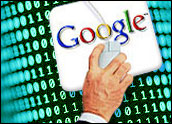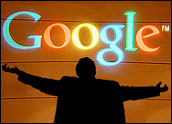
The Federal Communications Commission (FCC) has been arguing amongst itself over whether it has the authority to increase its regulation of the cable industry. At the heart of the fight is a market penetration test called the “70/70” rule and the data that would provide the catalyst for new regulation.
Of course, industry lobbyists have jumped into the fray. The National Cable & Telecommunications Association (NCTA) calls the 70/70 test a “relic” of the Cable Act of 1984. Basically, if cable service providers provide access to more than 70 percent of homes in the United States with at least 36 activated channels, and 70 percent of those homes subscribe to cable services, the FCC can then increase its regulation of the cable service providers.
Data Contentions
Each year the FCC releases a report, the “Annual Assessment of the Status of Competition in the Market for the Delivery of Video Programming,” and it uses the data in the report to help guide its actions.
Reportedly, FCC Chairman Kevin Martin wanted to rely on a single report that met the 70/70 rule — allowing the FCC to increase cable regulation and presumably force the industry to adopt features like a la carte programming that would let consumer pick and choose to pay for individual channels rather than bulk packages.
Martin argued that the FCC has relied on data provided by Warren Communications News for several years, and that Warren is the only research entity that directly surveys every cable system at least once every year, providing “the most complete source of cable data.”
Other members of the FCC panel were having none of it, however.
“Reasonable minds may differ in drawing conclusions from data. However, that data must be available for review and able to withstand scrutiny,” Commissioner Deborah Taylor Tate stated following Tuesday’s FCC meeting. “Data should be complete and viable.”
Go to the Source
After Tuesday’s meeting, the FCC reported its new plan of action:
“This year we find that based on data from Warren Communications News, the second prong benchmark has been met at 71.4 percent. However, other data sources do not demonstrate that the second prong has been met. As a result, we conclude that the only way to accurately measure the 70/70 test is to collect data directly from the cable industry. Therefore, the Commission requires each cable operator to submit the following information for 2006 within 60 days under penalty of perjury:
- the total number of homes the cable operator currently passes;
- the total number of homes the cable operator currently passes with 36 or more activated channels;
- the total number of subscribers; and
- the total number of subscribers with 36 or more activated channels,” the FCC reported.
The cable industry has long contended that while it may provide access to more than 70 percent of homes in the U.S., it doesn’t meet the second 70 percent of the 70/70 test.
Leased Access Channels
Despite the 70/70 test failure, the FCC did manage to land a few punches. For instance, the FCC did adopt a new policy that will let it better enforce the service provided to businesses that lease channels from cable service providers. By order of Congress, cable service providers must provide channels for use by unaffiliated video programmers, but according to the FCC, the cable industry hasn’t been particularly nice or easy to work with when it comes to its leased services. The new FCC order should help expedite complaints and improve the discovery process related to leased access disputes.
The industry landed a few wins, too.
“We are pleased that the commission dropped both a proposal to impose a new multicast must carry mandate on cable systems and a proposal that would have encouraged government intervention in private carriage negotiations. Rejecting these items sends an important message that consumers are best served by marketplace forces, not government micromanagement,” Kyle McSlarrow, NCTA’s president and CEO, said after the FCC meeting.
Robust Competition
At the heart of some of the FCC’s goals is the idea of helping consumers get better service for a reasonable price — which often means that monopolies are bad and result in artificially inflated prices and poor customer service. The cable industry, however, contends that even if it does meet the 70/70 test, it faces robust competition already.
There are two national satellite TV service providers, Dish Network and DirecTV, as well as telecommunications providers that are now offering digital video and television solutions.
“I think competition is thriving and consumers have never had more choice in new technology for video service, which now includes local cable companies, two national satellite companies in many markets, and telephone companies are now offering video services,” Brian Dietz, vice president of communications for the NCTA, told E-Commerce Times.
“The newest offering is the Internet … most observers of the video marketplace think there is significant competition. All you have to do is look at the local newspaper or even on TV to see all these ads from these various competitors trying to vie for subscribers,” he explained.
Furthermore, “the satellite companies have 30 percent of the marketplace, so just right there, we know the math doesn’t work. And cable companies in the last few years have been losing video subscribers while the satellite and telephone companies have been gaining them, so we are very confident in all of the independent analysts who have looked at the marketplace and have determined that the cable companies don’t have the 70 percent share,” Dietz added, noting that the industry is happy to provide the FCC with its own data.











































Social Media
See all Social Media